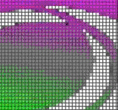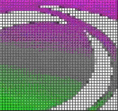The applications for LED Electronic Displays are endless. Any environment where information needs to be effectively and efficiently conveyed to any number of people has a requirement for an electronic display.
LED Electronic Displays are available to suit most applications both indoor and outdoor.
Illuminated LED Window Displays
These units contain LED back lights and side lights incorporated into the actual product creating an illuminated picture or pictures ideal for enhancing window or wall displays.
Full Colour LED Displays:
With pitch sizes (resolution) from 2mm through to 32mm our full colour, full motion displays provide the ultimate in small or large screen viewing impact.
LED Scoreboard Individual Digits:
Our scoreboards use high brightness single digit LED’s. The LED’s used in our digits are high quality, sunlight visible high brightness and available in a variety of colours.
Understanding LED Electronic Digits and Displays
Pitch (Resolution)
Unlike traditional media such as newspaper and magazines, LED Electronic Displays quickly capture attention with a combination of light, color, motion and graphics that get noticed. They also offer infinite options for creating a brand that gets remembered and, in turn, gets results. For most advertisers, the most important market is the local one. Think of LED displays as local advertising and sales partners that are “on” 24/7, working night and day to attract attention, deliver marketing messages and drive sales.
LED displays also cost 40 to 60 percent less per thousand viewers than most other forms of advertising. In fact, businesses can communicate with thousands of people each day for just a few Rand. When purchasing an LED display, it is important to understand a few basic principles that will help you select the right product for your application. The following sections present a brief overview of some of these basic principles



Viewing Distance and Speed
The distance between your sign and its viewers is the number one factor in determining the type of LED display you will need. Longer distances require less resolution and shorter distances require higher resolutions. In addition, if you are traveling at 90 KM/Hour on a freeway, and the sign is 200 meters away at a truck stop, the text letters must be at least 500mm tall to be legible. Likewise, if you are standing 20 meters away from a street level sign, the letters need only be 50mm tall to be legible.
The rule of thumb is that you need 25mm of character height for every 10 meters of viewing distance.
Viewing Distance vs. Pitch
A frequently-asked question is “What pitch should I choose for my LED display”.
Generally speaking, the viewing distance of an LED display is determined by 3 factors:
1. Pixel Pitch
2. Screen Size
3. LED Brightness
All of these factors need to be considered but as a rule of thumb the below table will give a good indication of minimum viewing distance requirements.
Indoor LED Display: | |
| P5mm LED Display | Best Min. Viewing Distance 3 meters |
| P6mm LED Display | Best Min. Viewing Distance 4 meters |
| P7.62mm LED Display | Best Min. Viewing Distance 5 meters |
| P8mm LED Display | Best Min. Viewing Distance 5 meters |
| P10mm LED Display | Best Min. Viewing Distance 5 meters |
| P12mm LED Display | Best Min. Viewing Distance 8 meters |
Outdoor LED Display: | |
| P10mm LED Display | Best Min. Viewing Distance 5 meters |
| P12mm LED Display | Best Min. Viewing Distance 8 meters |
| P16mm LED Display | Best Min. Viewing Distance 15 meters |
| P20mm LED Display | Best Min. Viewing Distance 20 meters |
| P25mm LED Display | Best Min. Viewing Distance 25 meters |
| P31.25mm LED Display | Best Min. Viewing Distance 30 meters |
LED Diode Density
LED diode density and pixel pitch are the two most critical factors to determine the quality of resolution and display brightness. LED density of a display is the total number of LED diodes in one square meter. It is calculated by multiplying the number of pixels per square meter by the number of LED diodes per pixel.
Virtual Pixel vs. True Pixel
Some LED display manufacturers use “virtual pixel” technology. They claim that “virtual pixel” doubles the actual resolution of screen, i.e., a screen with a physical (true) resolution of 320×240 pixels in reality is expressed as the “virtual” resolution of 640×480. In a “Virtual Pixel” Display in an attempt to smooth out digital image, each pixel of the image corresponds not to an actual module pixel but to a light/data source, that is part of the group of pixels that form the “Virtual pixel”. By this mode of pixel sharing one pixel contains the “Virtual group”* of pixels image information. *(The 2 or 4 pixels that are combined to form the “Virtual” effect). Virtual pixels are also known as “pixel sharing” or “dynamic pixels”. Some claim that with “virtual pixels” the displayed image has twice the resolution as the “physical” resolution. This is not true, since one module pixel cannot memorize or hold and display the majority of information from the initial pixel. The majority of the original information vanishes. This results in distortion of important details and other elements such as colors that are part of the initial image. In the actual, physical or true pixel technology, the image is displayed on a display in as each pixel of the original image corresponds to pixel on a screen. It takes the actual color in a pixel as it is balanced in brightness and contrast and no additional corrections are required.
Uses pixel sharing to achieve “virtual” pitch. Attempts to achieve equal resolution using 1/4 the diodes of a true pixel display. Each pixel is distinct, using individual groups of LEDs. Display has 4x the diode density of a virtual pitch, resulting in 4x brightness, greater color depth and better color accuracy.
Brightness
The Brightness of an LED display is generally expressed by a numerical value in NITs. A NIT is defined as unit of illuminative brightness described as candela output per square meter (cd/M2). The higher the number of NITs, the brighter the display. In general, 1,500 NITs, provides readable text in outdoor daylight, while grayscale and outdoor video require up to 5,000 NITs for acceptable color depth.
Contrast ratio is another important factor in overall brightness, and refers to the difference between levels of blacks compared to the levels of whites in the display. Things like reflective surfaces, glare from the sun, and dimming all affect contrast ratio. To optimize the contrast ratio and overall brightness.
Viewing Angle
Diodes can put out a single, narrow beam of light like a flashlight, or they can output a wide array across a room like a light bulb. Diodes output about the same amount of light no matter what type they are – but the “high-beam” diodes with a narrow angle focus more light into one small spot, whereas the “wide angle” diodes spread their light across the horizon. So, if you were to stand in front of a sign made from “high-beam” diodes with narrow viewing angles, you would see an extremely bright sign if you stood directly in front of it, but the minute you walked away from the small spot light of its focus, you would see nothing but black.
With wide viewing angle LEDs, the image is visible in consistent brightness and uniform colors throughout the entire viewing range of the display.



